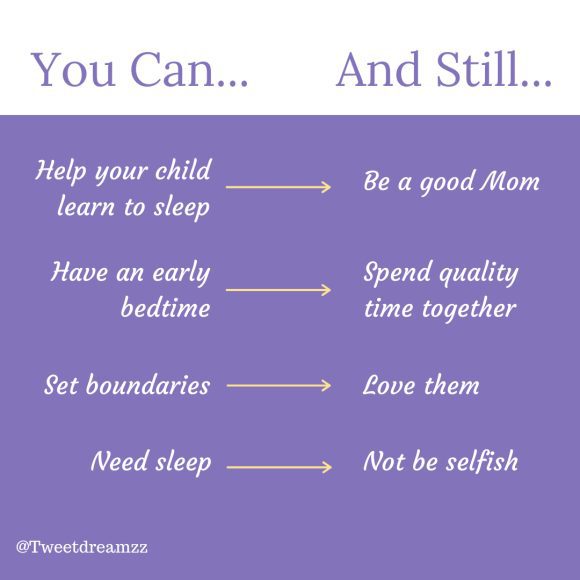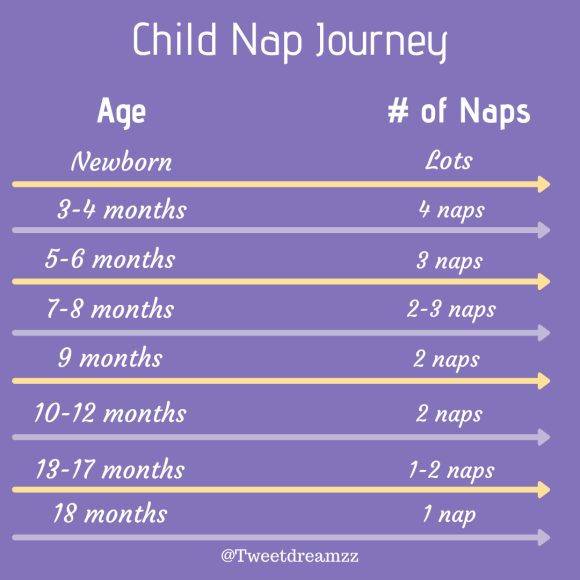This post is sponsored by Tweet Dreamzz Sleep Consulting.
One of the most common questions new parents, or second- or third-time parents, have is how to encourage their baby to sleep through the night.
You may be reading this thinking, “I am that mom!” — you are desperately wanting to improve nighttime sleep or naps for your child because everyone in your house is plain exhausted, even the dog.

As a certified pediatric sleep consultant, I don’t have a magic wand when it comes to baby and child sleep, but I do have tools for you to use when using a parent-led sleep approach. I’ll get into what those tools are below, but first, I want to talk about safety.
Safe Sleep for Baby
Did you know there have been recent changes to the AAP Safe Sleep Guidelines?
As more and more baby products enter the market (geared toward tired parents), it was very important that the AAP address safety concerns, and the data that has been collected over the past few years. Things like the DockATot and weighted sleep sacks are only a few things that have been called out in the new guidelines as unsafe.
Placing your child on their back in a bare crib is the safest possible environment for your little one. The AAP also now says that ANY weighted sleep sacks are not recommended. Wonder what your options are now? Visit my online store to see my favorite products.

Let’s talk about swaddling really quick. Swaddling correctly can be done until baby is 12 weeks old OR showing signs of rolling, whichever comes first. You will then give baby full range of arms and hands outside of a traditional swaddle and into a wearable sleep sack if you want. Read my best tips on how to transition out of the swaddle.
So listen, are you now past the newborn phase, and you aren’t sure how or where to start to improve sleep for your family? It can seem overwhelming, and on top of that, there are differing opinions and resources all over the internet and on social media. As a certified pediatric sleep consultant, I help families navigate this stressful time in their lives. You may be returning back to work or adding a sibling to your family. Wherever you are in your parenting journey, just know that making changes whenever YOU are ready is always the right time.

I work one-on-one with parents via virtual coaching, paired with tools and advice that will stay in your parenting toolkit for a long time to come!
So, let’s get started on what a parent-led sleep approach looks like.
Steps to Encourage Your Baby to Sleep Longer
Stretches at Night
Step 1:
Bedtime Routine
Young children will thrive with a consistent routine and environment. Practicing a familiar sequence of events, even through elementary years, can encourage healthy sleep habits and non-stressful tuck-ins. To reduce anxieties after lights out, keep your child fully aware of their bedtime routine by reducing any drowsiness paired with a consistent loving response. Young children need help with transitions, meaning they often can struggle when pivoting to a new activity. Reduce screen time at least 2 hours before bed and follow these steps.
-
Bedtime feeding, if there is one.
-
Bath/hygiene routine
-
Pajamas, diaper, sleep sack (optional)
-
Read a book/sing a song/say a prayer
-
Into bed + lights out
Step 2.
Sleep Props
A sleep prop is something your baby requires for them to fall asleep. Some are okay, but most are not sustainable. If your baby falls asleep with non-sustainable props, start moving towards a plan where your baby is in charge of how they fall asleep. Examples of common sleep props are feeding, rocking, pacifier, or a combination of these things.
Step 3:
Pause + Wait!
If you are working towards independent sleep (laying baby down in the crib at night and for naps), trust that you can step away for a few minutes, and all will be well. There are many sleep training methods out there to choose from.
Which one feels right to you? Staying in the room or leaving for a few minutes, if you feel confident to do so? There is no wrong way to this part, and it shouldn’t be filled with guilt on your part. Helping your baby learn this skill will reap its benefits for years to come.
Step 4:
Consistency!
Babies and children thrive on consistency and routine. If you want to see a different result with your child’s sleep habits, then being 100% consistent is your answer. This becomes even more beneficial as your baby enters the toddler and preschool years.
Want to get started with your baby’s new bedtime routine right now?
Get the full guide to better nights for your baby here.
And guess what?!, I have a twin version, as well!
 Lindsay Loring is a certified pediatric sleep consultant with Tweet Dreamzz Sleep Consulting. She lives in the St. Louis, MO metro area with her husband and twin girls. Lindsay specializes in ages 4 months to 7 years and even has a large niche following of twin moms. If you want a personalized, one-on-one experience with an expert, book your free call with Lindsay today.
Lindsay Loring is a certified pediatric sleep consultant with Tweet Dreamzz Sleep Consulting. She lives in the St. Louis, MO metro area with her husband and twin girls. Lindsay specializes in ages 4 months to 7 years and even has a large niche following of twin moms. If you want a personalized, one-on-one experience with an expert, book your free call with Lindsay today.










